Archery has been a part of human lives for centuries, whether as a free time activity or a key survival. Through the years, we have learned to make all sorts of different bows, ranging from wood ones to ones using alloys that I can’t even pronounce. But one thing hasn’t changed that much, the way we use it.
We just put an arrow being the string, pull it really fast and hard, and there we go, we have a nice clean and accurate shot. But as technologies advanced, we managed to make even the shooting portion better with the so-called bow release.
So down below, we will be looking at what makes a good bow release and showing some of the best ones you can get your hands on right now.
1. Scott Archery Fox Release
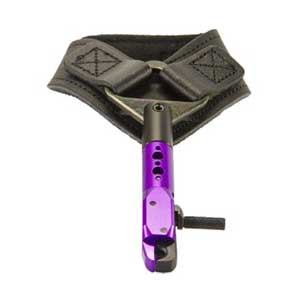
The first bow release on our list may be the best bow release for children and women alike. Its smaller design makes it easier to be used with smaller hands, and the optional pink color options assure that if you are a woman, you will not only enjoy using it but also looking at it.
This release features a forward knurled trigger to maximize draw length and a smaller wrist strap, best for the audience it is created for. The release aids are available in either a small wrist strap or a youth wrist strap, so it is the best for not only women but also both teenage boys and girls.
Suffice it to say – this adjustable hunting release will really improve your shooting experience if you are looking for models that are designed and thus have features for people with smaller hands.
Pros
- Its smaller design makes it easier to be used with smaller hands, in combination with its color option, making it a perfect choice for women
- This release features a forward knurled trigger to maximize draw length and a smaller wrist strap
- The release aids are available in either a small wrist strap or a youth wrist strap, so it is the best for not only women but also both teenage boys and girls.
Cons
- It is a shame that this bow release is perfectly made for women, but because of that, it doesn’t have the same quality as other Scott Archery products
2. Tru-Fire Hardcore Buckle
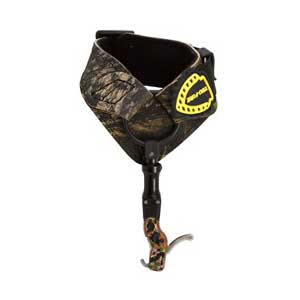
The Tru-Fire Hardcore Buckle Foldback MAX offers the best-customized outfit for hunters to adjust a trigger pressure from 3 to about 16, depending on your preference. However, adjustable features don’t stop at this release – for convenience, you now have an alterable belt that is not only wider but also more chunky than the previous models, with Velcro straps that are a trademark of Tru-Fire design.
The Tru-Fire Hardcore Buckle Foldback MAX’s hinge joint carries a movement of 200 so that you can adjust from one side to the other to make the torque available and help ensure superior stability. The Tru-Fire Hardcore Buckle Foldback MAX is very convenient to use and provides prompt attachment of the loops to the archer in intense circumstances.
The Tru-Fire leather buckle foldback strap is also over an alteration in the length of 5/8 and has completely alterable trigger travel, and a back trigger is swept back. The plush black evolution II buckle has an additional 2.5x foam, which really doesn’t help you feel the bow release’s hardy internal structure.
The padding of the Tru-Fire is also slightly broad with rolled corners causing it to be the easiest strap on sale. The Tru-Fire10.5 x 5.2 x 1.8 inches, and the weight of the item is about 6.4 ounces.
Pros
- It offers the best-customized outfit for hunters to adjust a trigger pressure from 3 to about 16, depending on your preference
- The hinge joint carries a movement of 200 so that you can adjust from one side to the other to make the torque available and help ensure superior stability
- It is very convenient to use and provides prompt attachment of the loops to the archer in intense circumstances
Cons
- There have been countless reports of serious problems with the hook, with it either being too sharp or not opening too far, both times destroying your D – loop
3. Scott Archery Dual Caliber
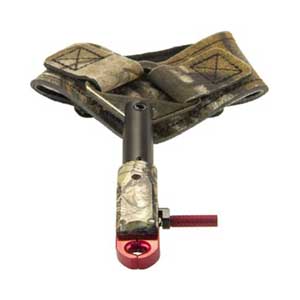
It comes with an adjustable knurled trigger as well as a heavy molded dual Caliper grip. This molded release of the grip archery provides smooth action and is quite spot-on. It delivers immediate release and provides better groupings.
It promotes greater precision thanks to the small handle that allows effortless control with your hand, virtually making the device part of your hand, so at the release point, you will feel no jerky sensation in any way.
Out of this remarkable archery device, you get exceptional grip and versatility. Thanks to its machined aluminum and solid steel construction, it offers a precision release experience, making it easy to operate and the length of the trigger pull easy to adjust.
The swiveling head of 360 degrees effectively prevents string torque, enabling the bolt to be released smoothly and increasing your shooting accuracy and distribution of torques. Ideal for target shooting and hunting, the right-and left-handed shooters can use this molded rubber dual Caliper grip.
Suffice it to say, this type of release offers excellent features like a dual Caliper grip and a full wide range of 360 degrees of smooth rotation of its pivoting head, and its adjustable trigger pressure is the best for both hunters who want to go on a casual hunting session and serious archers looking to improve their performance. You can add this archery release to your arsenal without thinking too much about it, and it will truly provide one of the best archery release experiences on the market right now.
Pros
- It comes with an adjustable knurled trigger as well as a heavy molded dual Caliper grip which provides smooth spot-on action
- Thanks to its machined aluminum and solid steel construction, it offers a precision release experience, making it easy to operate
- The swiveling head of 360 degrees effectively prevents string torque, enabling the bolt to be released smoothly and increasing your shooting accuracy and distribution of torques
Cons
- The whole release works as intended, and it is overall excellent, but the grip is so small that most people won’t be able to use it
4. TRUGLO Detonator Single Jaw
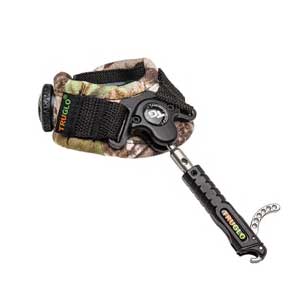
This compound bow release from Truglo offers a quiet, fast, accurate, and smooth adjustable hunting experience. Its silenced mechanical jaws allow any hunters out there to catch their prey in complete silence.
Its streamlined open hook design doesn’t use two jaws, just the opposite – it takes advantage of the easier to use single – jaws design ditching the old two jaws one. The hook also opens away from the shooter for more comfort and an ultra-smooth overall experience.
But it still manages to improve, giving every hunter a micro-adjustable trigger pull that distributes torque evenly, thus managing to add an extra level of accuracy to your shot.
It’s made only from the best stainless feel available, with the whole jaws mechanism made from a machined one, giving it increased durability and repeatability. Its 360 degrees rotating head eliminates string torque, thus able to add
Suffice it to say, with features like 360 degrees rotating head and a single jaws design, plus the ergonomic Velcro strap like on all Truglo models, you have an admirable addition to every hunter’s arsenal, able to improve it and add to it in almost all categories.
Pros
- This compound bow release from Truglo offers a quiet, fast, accurate, and smooth adjustable hunting experience
- It’s made only from the best stainless feel available, with the whole jaws mechanism made from machined one, giving it increased durability and repeatability
- It gives every hunter a micro-adjustable trigger pull that distributes torque evenly, thus managing to add an extra level of accuracy to your shot.
Cons
- Its main caveat is the fact that around the hinge, it is not reinforced that well, so it can end up breaking on you. This isn’t a huge problem with their great customer service tough
5. Spot Hogg Wiseguy Buckle
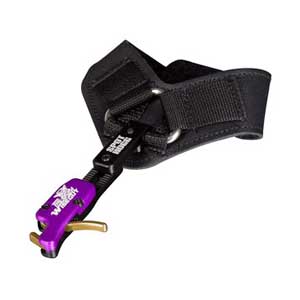
The Spot Hogg WiseGuy Release Buckle Incorporates one of the lightest triggers available on a hunting release with zero trigger travel. The unique design of the KEETON release seamlessly blends two styles of releases into one.
It has an amazing set of adjustable features light, adjustable trigger with zero travel self-reloading hook—forward trigger design for maximum draw length and speed.
But it doesn’t end there. The release also will improve your recurve or compound bows experience with its open jaws design for ultra-fast D-Loop hook-up. It is also locally made, so you know what you are buying.
Suffice it to say, for the price that you can usually find it, the release offers an amazing set of adjustable features not found on the most similar middle-of-the-road models.
Pros
- This Release Buckle Incorporates one of the lightest triggers available on a hunting release with zero trigger travel
- It also features a self-reloading hook and a forward trigger design for maximum draw length and speed.
- It is also locally made, so you know what you are buying because if it is made right here in the USA, you can rest assured it is of high quality
Cons
- The release is being advertised for professional use by men and young adults, but it is so small that it’s like its made for little kids
6. Carter Enterprises 3 Finger

Similar design to the 1st choice release, but with an index finger hole for more consistent finger placement. It also features a self-closing single jaw and a set screw tension adjustable mechanism.
It is available in a huge array of colors that allow you a certain level of customization if you are keen on looks. It doesn’t weigh that much, and in terms of size, it isn’t too cumbersome to hold. As a thumb release, you get a really good speed and power, no sacrifices.
Suffice it to say, for a three-finger release at this price, with all of its adjustable parts. These models will definitely add some very well-needed features that will improve your archery or hunter’s experience.
Pros
- This release uses an index finger hole, and thus it gives you an even more consistent finger placement, assuring a faster rate of fire
- It also features a self-closing single jaw and a set screw tension adjustable mechanism, giving you another level of adjustability
- For a three-finger release with this amount of quality at such a low price, it is definitely a steal
Cons
- The only thing that this release doesn’t manage to hit the mark is the force that you need to use to adjust it, making on-field changes a little difficult
7. Tru-Fire Synapse Release

The new Tru-Fire Synapse thumb-button release with true double-sear operation features a broad range of adjustments that will allow you to perfectly adjust it to your liking, thus allowing you to improve your archery skills by a significant margin. Built on the platform of a weighted brass handle with an anodized aluminum cover, the Tru-Fire really is one exceptional release.
The Tru-Fire also features some adjustable trigger mechanism travel and trigger pressure and а weighted brass handle. But the Tru-Fire’s features still don’t end here. With its aluminum anodized cover and components, it is only about 5 ounces in weight, and the multi-position thumb peg and cord loop make it even more adjustable.
Suffice it to say – the Tru-Fire Hammer Throw Release really makes an excellent release for the price. Thus if you are interested in all of the hunter and sports archery features that the Tru-Fire offers, you won’t make a mistake if you add it to your collection.
Pros
- The new thumb button system with true double-sear operation features a wide range of adjustments that will allow you to adjust it perfectly to your liking
- The release is pretty lightweight because, with its aluminum anodized cover and components, it is only about 5 ounces in weight
- Built on a weighted brass handle and combined with its great performance makes it perfect for both hunting and competitive archery
Cons
- While it definitely has the performance for hunting, it makes such a loud and annoying sound that you will scare away any pray
8. Spot Hogg – Boa Strap
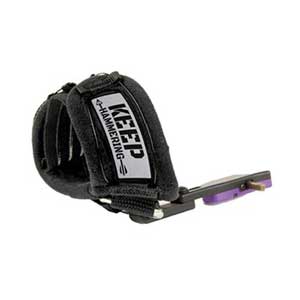
Ripping the bull’s eye should be less of a problem if you opt for the Spot Hogg Wiseguy Release Buckle, which provides you with everything you need to improve your sharpshooter performance. The many advantages of this archery release device qualify him for a spot in the arsenal of anyone who regularly uses a compound bow.
In many different situations, the fast loading capacity can serve you, while the fail-safe trigger will ensure that you do not drop an arrow without the intention to do so. It’s lightweight and really easy to use.
You’ll appreciate the open-jaw design that lets you quickly attach it. While hook models had trouble staying in place back in the day, this is not the case with this model. Not only does this one easily secure to the bowstring, but it will always deliver consistent results.
Other advantages that this model offers are the zero travel feature and forward design that will allow you to make the most out of your tool’s draw length. It will also give you the speed required to improve your accuracy as an archer.
Pros
- The fast-loading capacity can serve you very well, and the fail-safe trigger will ensure that you do not drop an arrow without the intention to do so
- With its open-jaw design, you will be able to attach the string as quickly as possible; thus, you won’t miss any target
- Other advantages that this model offers are the zero travel feature and forward design that will allow you to make the most out of your tool’s draw length
Cons
- The two most glaring issues with this product are its lack of any silencing, with the BOA system making a lot of unnecessary sounds and the way that the release attaches to the string is very unconventional and very comfortable
9. Spot Hogg Keeton Release
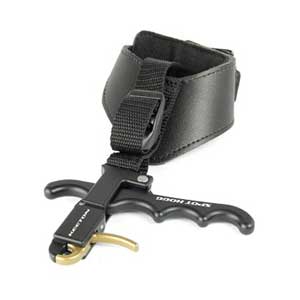
The Keeton Release’s unique design seamlessly blends two release styles into one. A wrist strap, index trigger style at heart, and integrated grip allow the archers to draw and shoot using more to handle the weight than just the shoulder.
Upon the proper adjustment of the release length, the archer may evenly distribute the weight between the grip, wrist, arm, and shoulder. The grip pivots at full draw, quickly aligning the finger to the trigger. Reduced fatigue and better stability give better accuracy and a more pleasant shooting.
To wrap it up, this is another great trigger mechanism that offers a large array of features you can adjust to your liking and an innovative deal unlike most of its competitors, thus making it the best bow release on the market in its category.
Pros
- The Keeton Release’s unique design seamlessly blends two release styles into one – being both a wrist and an index finger strap at once
- The integrated grip allows the archers to draw and shoot using more to handle the weight than just the shoulder.
- Upon the proper adjustment of the release length, the archer may evenly distribute the weight between the grip, wrist, arm, and shoulder, which is a rare but excellent feature
Cons
- The unconventional design offers some excellent features, but the execution isn’t perfect, and if you don’t want to practice using it a lot, it will end up feeling clunky and cumbersome
10. Scott Archery Sigma Release

The Sigma offers a more comfortable feel with a new, more ergonomic handle. You can feel the difference when it’s fully drawn, allowing you to be relaxed and confident. The Sigma puts your hand in optimal performance positions, thus making it an excellent and maybe one of the best bow release models orientated towards performance.
The Sigma is highly engineered for maximum accuracy, using premium internal components made from Machined 440 Stainless Steel. Its trigger is fully adjustable, and the head swivels in a full 360 degrees range. The whole release is made to be as ergonomic as possible, so it is certainly an excellent choice.
Pros
- The Sigma offers a more comfortable feel with a new, more ergonomic handle, not putting too much tension on you even if fully drawn
- The Sigma puts your hand in optimal performance positions, and to that extent, it is one of the simplest and best performance options out there
- The release is highly engineered for maximum accuracy, using premium internal components made from Machined 440 Stainless Steel.
Cons
- There have been numerous reports of isThe jaw does not close every time successfully, and this can result in some serious problems during a hunt
How to choose the best bow/archery release?

For you to be capable of not only choosing the best compound bow but maximizing its use, you’ve got to apprise yourself with certain specifics; Let’s go!
Shooting Style
This speaks about how you release your bow. Significantly, everything varies according to whether you find the bow’s release in a hand-held or wrist strap bow release. These are the two styles that are best known for releasing your bow.
And in terms of their softness, they can be seen, and how much you can adjust them. The styles of your bow release shooting have to do with shooting a kind of loop on your string or right of the string. As a result, when considering these different styles, you must be awake at shooting the best archery release.
Maximum Draw length
The maximum draw length from which your bow should be released is discovered when you take measurements from the tips of the middle finger to another. You can then simply divide that number by just 2.5. The quotient you get for your body size is your proper draw length.
String Style
What about a string? Your string bow can be set in a variety of ways. You can have them situated on the string as a “D” ring, a metal nock, or a metal-type clip. Some of the bow release aids on specific string styles are not just useful for your purposes. However, be careful that the bow release tool that you want to go for can work with your string system.
Noise
Archers need to focus critically on the noise generated by the release. Some brands are crafted in such a way that they make a thudding sound while being used. Note that the noise can spook your target conveniently.
Consequently, ensure that your prospective bow release tool makes little or no noise at all. There are actually releases of bows that take on noise-making a zero disposition. You are expertly advised to go for this.
Adjustment
The moment you decide to buy a hand-held bow release, you also need to consider and note the amount of length adjustment it provides. Not all hands of archers are of the same orientation, so a release of bows wouldn’t suit all hands. You may not have to stress yourself to make adjustments to the triggers.
Automation
You have to realize that certain archery releases are either automatic or hydraulic. The bow frequently shoots the bow after a certain amount of time the moment you are pulling back has gone. You can find those automatic release tools in either wrist or hand-held styles. Nevertheless, be careful to find them on bow releases as very expensive for all brands.
Let’s suppose you’re an archer or even a beginner archer, and perhaps you should avoid or do away with using this type of bow release.
Comfort
How comfortable is your bow release really to find? You realize there are just a few bow releases that don’t suit at all because they fit tightly.
Material and Build Quality
A normal bow release should be made of metal. Some are now made of plastic or rubber, though. Anyway, you need to make sure that the best of either material is of considerable quality, just fit for your purposes.
Target Panic Cure
The aim of a panic condition is a physiological feeling that leads to arrows being misfired. It results from the shooter’s lack of finger concentration aiming the arrow at the center of a target. Wrist releases are prone because of an overwhelming urge to make the user shoot faster than expected.
Interestingly, a hand-held release counteracts target panic (cures) because the release mechanism relies on the back tension rather than a manual trigger.
So, there’s a low risk of jumping at the release point with the hand release. This type of release aid cures the target’s panic, and a proper shot is executed.
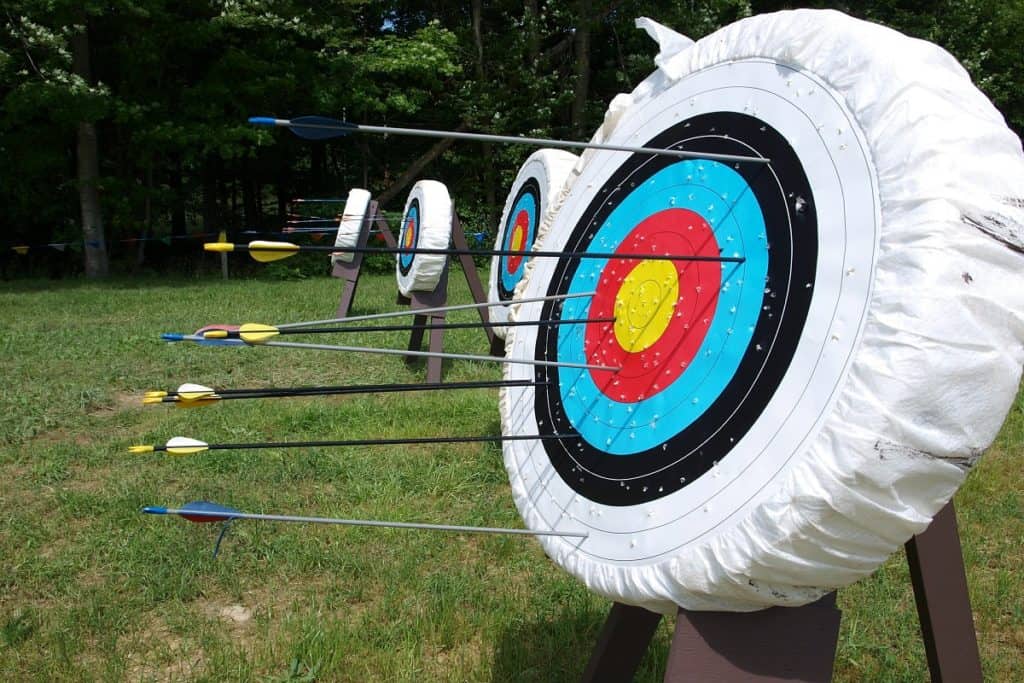
Attachment
Many models come with a handy strap, with buckles worn like a wristwatch. Wrist release with rotating locking jaws is aesthetically designed and foldable.
The locking jaw of a hand-held release, unlike the wrist release, allows users to attach it to the D-loop. The hand-held release aid usually does not come with Velcro straps but can be kept in a hip pocket.
Anchor Point
The anchor point is the position of your hand at the time an arrow is released. You can adjust the length of its Velcro strap and buckle pins by using wrist-release aids.
The adjustment also allows for angles of inclination of your hand and a point of reference. The hand-held release, however, can help you boost consistency and accuracy with the safety of the anchor point.
Budget
It might be tempting to buy high-end release aids, but when shopping for archery gear, your budget is a great factor. Usually, those aids are priced between just $15 and as much as $150. How seriously you take archery and how accurate you want your shots to be will determine your budget.

Frequently Asked Questions
Why Do You Need To Use A Bow Release?
Archery and bowhunting are interesting games that require different accessories for better results. Traditional bows didn’t require any advanced release system, but as compound bow technology developed, more sophisticated releases became essential.
The bow release (also known as ‘mechanical release’) is a strap with a built-in release mechanism that connects the bowstring and the shooter’s wrist or hand.
This accessory is designed to release bowstrings from the loop when the shooter pulls the trigger. There is a product specific to target shooting or hunting. A bow-release wrist strap is designed to loosen the tension off your hand. The arm muscles will help you draw bowstrings smoothly instead of using your digits and experiencing fatigue.
Archers and hunters rely on dexterity to align their shots to the target. During cold temperatures, a release can help, especially when you practice or chase in the rain. You’ll need to precisely release your cold fingers, even when wearing gloves, especially if you’re using a powerful longbow.
A proper bow release mechanism provides a smooth and steady motion, which prevents accidental misfires. Dry firing takes place when the hand inaccurately releases a nocked arrow and affects the shots you take. In extreme cases, the tension on your fingers could impact the bow and destroy it inadvertently.
Other problems with using the wrong release of bows are wobbling hands, jerky movements, poor techniques, and unstable side-to-side movement. With a new bow release, you might need a little practice to get satisfactory results at targets.
But target panic, compatibility of the bowstring, anchor point, and release mechanism are factors to consider when choosing a top bow release.
How to Use a Bow Release (Target Step-By-Step Guide)?
A bow release is a physical tool designed to deliver a splendid and precise arrow release from your compound bow. In those generally used, you would see that a thumb-controlled trigger system will let the string off, which you hold in your hand or fix to your twist. In another type, recognized as a back-tension release aid, the cord is automatically discharged from the moment you pull it to a preset voltage.
A compound bow is often suited for a unique kind of arrow rest, considered a launcher, and the arrow is often filled with a vane pointing either up or down or a cock feather, related to the type of launcher used.
The arrow and bowstring are then grabbed with a three (3) finger. Alternatively, you may opt for some mechanical release of the arrows. And this is precisely where the meaning of arrow releases comes in. This does not rule out thumb release place. Indeed some hunters prefer them even more.
The moment you make use of the mechanical release, it attaches the bow release to the D-ring. The type preferred by the Mongol soldiers generally referred to as the thumb release pattern, is a different kind of string hold used on common bows. In fact, this is about using the thumb to pull the string, with the fingers going all around the thumb to contribute more sustenance.
You open your hand to let out the string, and the thumb is relaxed to allow the string to glide away from the thumb. The moment you use this type of bow release, the arrow should lean on the specific side of the bow as the hand you use to draw on the left region of the bow.
After all, you can raise the bow and pull the string against slightly canted bow situations, with different alignments for perpendicular orientation. This one is usually an easy thing for both recurve and longbow shooters. In the course of getting the drawbacks, compound archers usually experience a slight jerk, about the last inch and a half, the point at which the draw weight is at its highest – before resting in a convenient, consistent, complete draw position.
You can then pull the string hand against the face, the place it should slightly rest at a fixed anchor position. This position is stable from shot to shot and is often at mouth turn, on the chin to cheek, or even to ear, based on the shooting mode chosen. It is then held by the archer toward the target.
You can always loosen the arrow by relaxing your pulling hand fingers. Often the release holds out to position the drawing arm very firmly with the compound bow relaxed, as you would discover, and the arrow is positioned back, making use of the arm motions. compound bow relaxed, and the arrow is positioned back, making use of the arm motions.

Type of bow releases (Wrist vs. Thumb)
There are generally two types of bow releases: wrist-strap releases and hand-held bow releases. You will find multiple options within those categories based on the type of bow you are using and your shooting preference, as well as different features and adjustments.
Let’s look at the various types of bow releases and their strengths and weaknesses.
Wrist Strap Bow Releases
Wrist strap bow releases are the “classic” bow release style and are very user-friendly.
As you can see, it has a leather and reinforced fabric strap that snugly fastens around the wrist, holding the d-loop onto your bowstring at the end of the chain, and a trigger that releases the arrow when you pull it. Using a wrist strap bow release, you pull the trigger with your index finger.
Wrist strap releases can be very precise and effective, but they are not generally considered the most accurate form of bow release. Since you mount them to your wrist, and because they may not be on the same spot on your wrist whenever you take a shot, they add a little variation in your shot— and accuracy is about consistently shooting the same way over and over.
So, why do people use them so much — usually bow hunters —? Well, it’s a trade-off, and they’re worthwhile for a number of reasons: The wrist strap keeps your hands free. Because you wrap a strap around your wrist and it stays there until you take it off, they are easy to use on a hunting trip, where you have plenty of other hunting equipment to consider and need your hands to perform other tasks.
When bowhunters come across some game and are ready to take a shot, the bow release is right there, ready and waiting at the end of their wrist — the only thing they need to do is to attach it to the bow string’s d-loop.
High-poundage bows make them easier to use. When they’re on the hunt, bowhunters tend to use very powerful bows, and those bows can be very difficult to draw. A wrist strap allows you to use all the different muscles in your arm — including your triceps — to pull back the bowstring instead of just relying on your hand, like a hand-held bow release would do.
There’s also the issue of gloves — bowhunters out may not be able to grasp a hand-held release in very cold weather wearing gloves.
They are fairly accurate. They may not be the most accurate kind of release — that would be the release of the thumb or hinge — but a properly adjusted wrist release can provide enough precision for a bowhunter to put an animal down. These can be the best option in combination with all the other benefits.
With all that said, plenty of folks are using a wrist-strap release to shoot targets and 3D shootings. Bow releases are pretty user-friendly, and pulling the trigger is a very intuitive way of shooting (whereas some of the other releases get used to some).
This model has a few small variations — some wrist strap bow releases feature a hook rather than a caliper — but that’s the gist of it.
There are several different types of hand-held bow releases, by contrast.
Hand-Held Bow Releases
Hand-held bow releases were once used primarily by competition shooters who needed to launch their arrows with the utmost accuracy, but have gained wider popularity in recent years, and you’ll see archers of all stripes — bowhunters, target archers, etc .— using them.
They are easy to use consistently — because each time you shoot, you can hold the release in your hand exactly the same way, you recreate the same draw, shot after shot, so accuracy can be a bit easier to obtain.
There are three different types of hand-held bow releases:
Thumb Releases
The photo above shows a thumb release. As you can see, there is a handle with your fingers to grasp the release, ahead at the end of your bowstring that you attach to the d-loop, and a round knob (sometimes referred to as a “thumb barrel”) that you put on your thumb.
The thumb barrel is the trigger, and when you draw, you click the thumb barrel and release the shot. Thumb releases have a wide variety of uses, and many bowhunters and target shooters use them.
Hinge Releases
Hinge releases are a little more complex, and while they look very similar to a thumb release, they are quite different: whereas with a thumb release, you push a button with your thumb to release an arrow, with a hinge release (aka release of tension), you rotate the bow release backward to release an arrow.
Hinge releases use a hook to grab the d-loop on the bowstring, so when you get to full draw and turn the hinge release backward, the d-loop falls off the hook, and the arrow is released.
Resistance Releases
These aren’t as popular as thumb releases and hinge releases, but we see much more of them than we used to. A resistance release is tuned in such a way that it releases your arrow when it meets a certain amount of resistance. There’s no trigger releasing the arrow — as you pull back the bowstring and reach your holding weight at full draw, you pull back a little bit further — increasing resistance to bow release — and letting your arrow fly away.
Resistance releases need to be very carefully tuned, and you need to know the specifications of your bow so you can set it properly. We don’t review any of the above resistance releases, but you may want to check out the Stanislawski Stan PerfeX Resistance Release, which has a very good reputation if you’re interested.
Back Tension Releases
You may hear a lot about releases of tension or releases of back tension, so we will discuss these before we finish.
Back tension releases aren’t technically a release category but rather a release method where you pull back your drawstring, reach full draw, and then contract back muscles as the last part of your draw cycle — the part that releases your arrow.
Typically, hinge releases are the most commonly referred to forms of back tension releases because when you get to full draw, you can tension your back muscles by pulling your shoulder blades together, thereby rotating the hinge a bit and letting the arrow loose.
The truth is, however, you can use back tension to activate any sort of release, and many archers and bowhunters do so. Place your index finger on the trigger or thumb on the thumb barrel, then pull your shoulder blades together, and that gesture can pull you the trigger.
There is, of course, some discussion in the archery community about what a back tension release actually is, but there you go—now you know the arguments!

Which Type of Bow Release is Right for Me?
There are a couple of factors you’ll need to consider when selecting a bow release. First—and perhaps most important:
If You’re Using a Recurve…
In most cases, recurve archers use finger tabs or gloves, and compound archers (for both target shooting and bowhunting) use bow releases.
If you are looking for a recurve tab, we recommend the Arizona Archery Leather Tab and the Damascus Shooting Glove if you’re looking for a recurve glove. We have a whole post here about gloves.
Bottom line: You should use a tab or a glove when using a recurve. If you are looking for a bow release for a compound bow, keep the readings bow release to release an arrow backward. Hinge releases use a hook to grasp the d- on the bowstring, so when you get to full draw and rotate the hinge release backward, the d- falls off the hook, and the arrow is released.
If You’re a Beginner…
The easiest kind of bow release to use — and the one most beginner archers and bowhunters are using — is the release of the wrist strap with a trigger. They are easy to select, easy to strap, and the index finger trigger is very easy to use (and, honestly, it also feels pretty cool).
Usually, they have an adjustable release mechanism, so when you get ready to shoot, you can adjust the torque or play around with the pressure, and that is part of the learning curve. Generally speaking, wrist releases represent a better option for new or novice archers.
Bottom line: Usually, your best bet is when you’re a new archer, wrist-strap releases with a trigger for your index finger.
If You’re a Bowhunter…
Choosing bowhunting equipment is a highly specialized activity, and this is essentially what comes down to choosing what works for you. We wish we had a more concrete answer than that, but that is the facts. The longer you’re a bowhunter, the more conscious you are of what you like.
That said, hunters seem to say the following: Wrist releases are perfect as you never have to touch them — they’re just on your wrist, and if you get a chance to shoot a game, you only have to clip it to the string — but it can be uncomfortable to have something hanging off your arm, it can rub your bowstring and make a noise when you want to be quiet, so it can be hard to wear.
Many higher-end wrist straps have a “foldback” feature where you can turn the end of the release back onto yourself, so when you climb the ladder on a tree stand, look through binoculars, etc., it doesn’t get in the way, and that’s a nice feature, but not every wrist release has that feature.
Hand-held releases are good because you can attach them directly to your bowstring and leave them there, which ensures that your hands are fully free and you won’t get your wrist stuck in a branch/part of your tree stand / on your clothes, but hand-held releases will slip out of your fingertips if you’re sweaty, can be difficult to use with gloves and can often be loud when you need them. Man, they’re the worst.
Bottom line: Most bowhunters use wrist-strap bow releases for bowhunting because it helps them to use both hands for other tasks, and they are the best choice if you’re a new bowhunter. There are plenty of bowhunters who use thumb releases and even hinge releases, but those bowhunters tend to be a little more experienced.
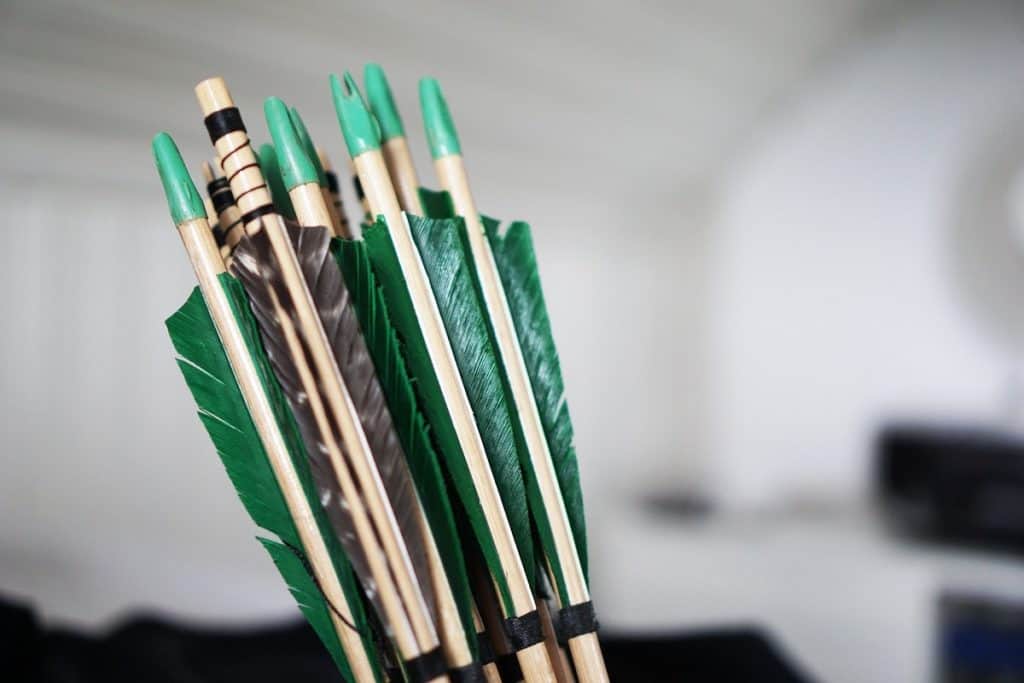
If You’re into Target / Tournament Shooting…
Hand-held releases, particularly thumb releases and hinge releases, are the release aid of choice for most target shooters/tournament shooters that require as much precision as possible. Those two releases typically have a high degree of adjustability, and being able to change the settings on your bow releases can be a tremendous help when it comes to precision.
Goal archers spend years perfecting their form so that every time they draw the bow, they re-create the same exact movements again and again. Any small number of micro-motions and target archers can change their bow release to suit their drawing requirements.
There’s another explanation why thumb releases and hinge releases are common for target archers looking for precision: hand-held bow releases appear to encourage more precise drawing, and it’s easier to get them to the same anchor spot on your forehead, time after time, and re-create an accurate shot.
The wristband can waver over time on a wrist strap release and can slip on your wrist if you’re sweaty, making it harder to replicate the exact draw over and over again. You might see a wrist-strap release in a sprint, here and there, but they’re far rarer.
Bottom line: Target archers and tournament shooters tend to use thumb releases and hinge releases, as these releases provide precision and stability in controlled environments such as a tournament setting.
What is a release for a bow?
Simply appreciate in hunting that what a release aid is to a bow is what a cooking utensil should be. The release clearly designs to shoot further arrows at an accurate and precise pace. This is done by simply using a trigger, instead of using the archer’s fingers, to let off the bowstring.
What is the best bow release for hunting?
Wrist releases among archers and hunters are considered the most well-known and well-accepted forms of bow release aids. This is because, in adjustability, they are convenient to set up and Premium. They are also reliable and larger than hand-held ones. They are, most importantly, quite workable in use.
What is the best compound bow release?
The best compound bow can be declared as the Spot Hogg WiseGuy Release Cameron Haines Edition BOA Strap due to its great, endearing features that include a self-loading hook, a mini-adjustable length, a minimally adjustable dial for a suitable fit, and it is manufactured for frontline hunters, has a zero travel and features of high quality.
Who Needs an Archery Release?
Realistically, all benefit from using a release of archery. If you just start the sport, having a release will help you become much more skilled, not to mention accurate, and much faster than using your fingers. Every type of archer, however, will greatly benefit from a quality release.
- Hunters may use a release trigger to ensure better precision when shooting. The ability to make a release with pinpoint precision will mean the difference between bringing down a target with one shot or trying to track a wounded target for hours because they are looking for a “kill shot.”
- A release will help competitive archers as it will make them much more accurate when shooting 3D. Additionally, since this form of archery takes a great deal of practice, using a release will keep your fingers from unnecessary damage done by so many times pulling the string back.
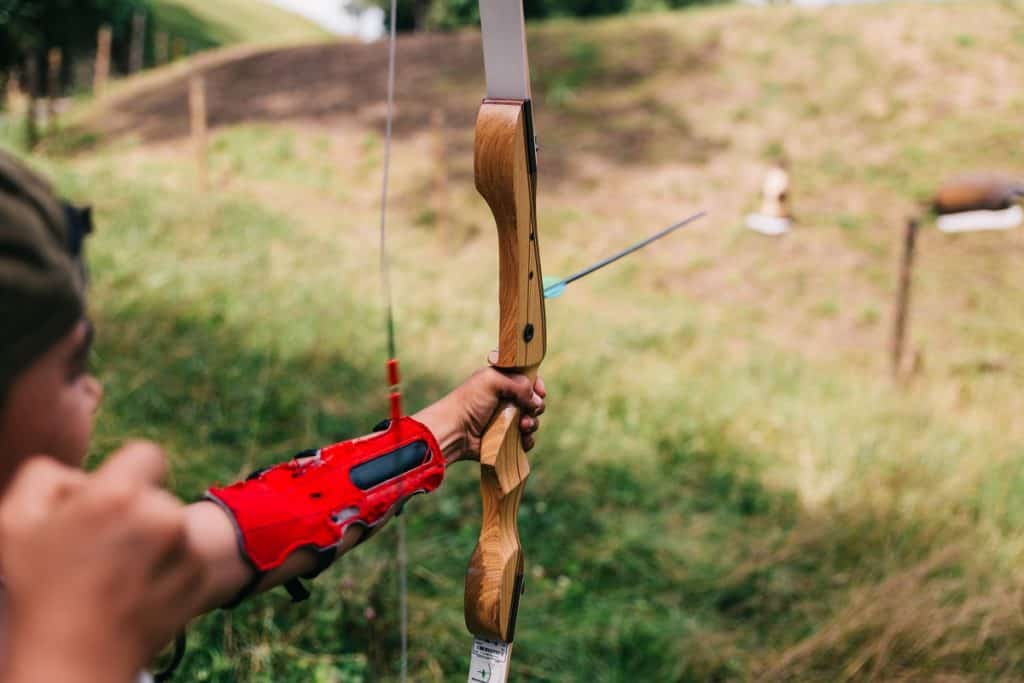
How to properly wear a bow release?
You need to know that some bow releases, especially the mechanical releases, are designed to be directly attached to the string platform, while others are created to be used with a string loop. Experts would always recommend that you ensure that your bow release suits your shooting style.
You can then fasten on your wrist straps in such a way that it becomes comfortable but not tight. Finally, as you adjust your trigger, you can then make sure you tweak the length of your bow release.
Can you use a thumb ring?
Yes, you might. But if you are competing, you can only do so for a compound bow. It is allowed to use a thumb ring on a recurve one. It’s not often a release aid, but safety on the pull from your string is nothing other than using a finger check.
How do you release an arrow?
Once you decide to release your arrow, the first important step to take is to align your body structure vertically to the target. You may then stand upright and structure the shoulder breadth of your feet, all spaced out. Then you can direct your arrow downwards and attach an arrow to the cord.
You can then solemnly deploy a few three fingers to hold the arrow right onto the cord. After that, you can aim your bow toward your target. Use three fingers to pull back the bow drawstring just before your face. Target your target. And finally, by relaxing your fingers on your string hand, you may let the arrow off.
How does a bow release work?
If used along a wrist strap, the bow release allows you to draw the bow’s draw weight with the arm muscles instead of allowing all the stressed tension on the fingers. Importantly, bear that compound bows are crafted to shoot on a release tool at the back of your mind.
Final Words
Finding the best bow release isn’t an easy task, as you may have gotten it by now. It has many parts that are specific to hunting or are made to help both a hunter and a normal sports archer, many different features you can adjust to your liking, and many different form factors.
But with this article, I hope I managed to enlighten you a little more about the archery world and how much a release is important for optimal performance.
Suffice it to say, even if your release isn’t from an expensive and we’ll know brand like Scott Archery or Tru-Fire, by now, you know what to be looking for when you need the best hunting or practice release, so even if you don’t choose any model from our list, I’m sure you will manage to find the best model for you.


